Agriculture and Ranching Overview
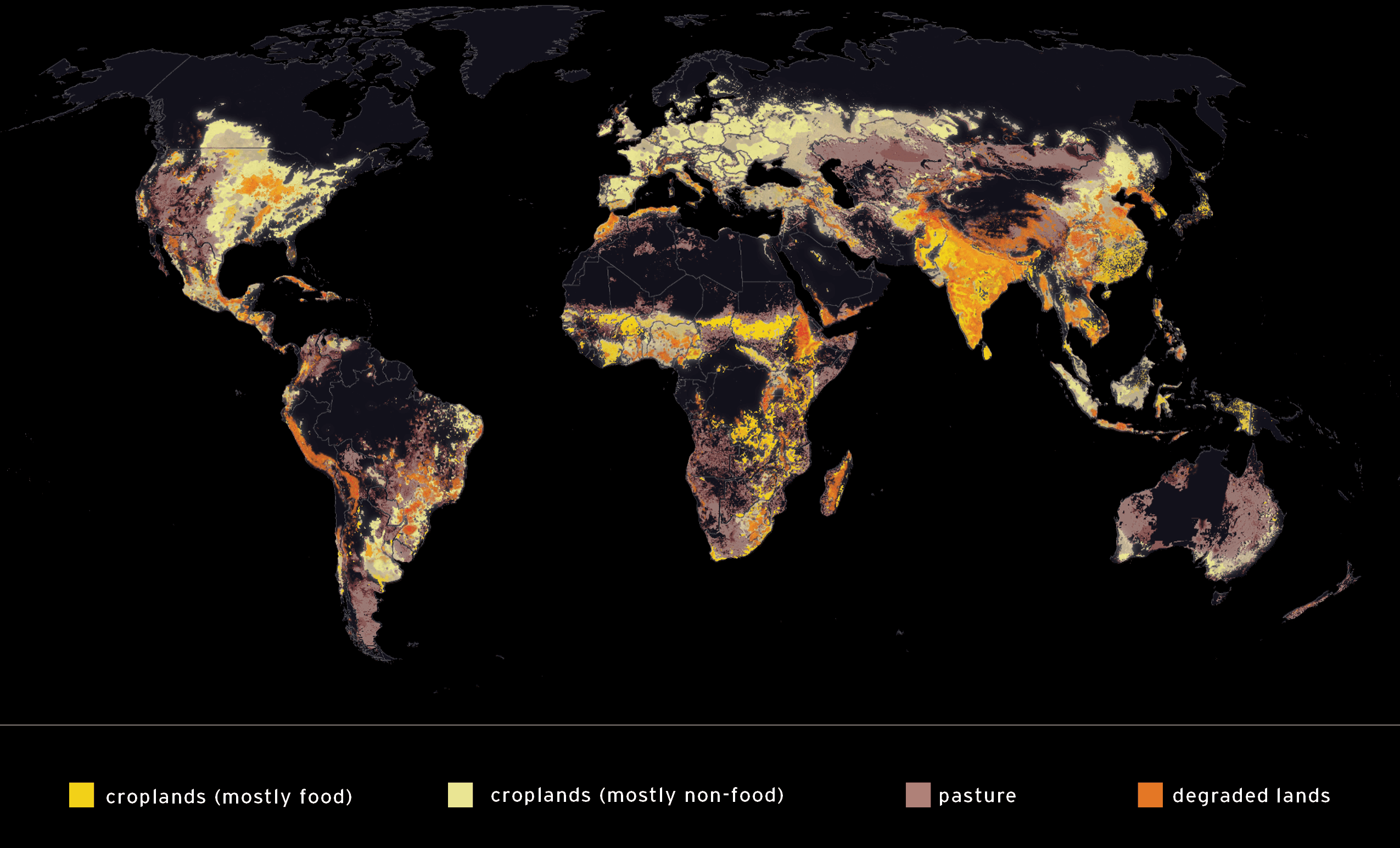
AGRICULTURE AND RANCHING ACCOUNT FOR ROUGHLY 16% OF GLOBAL GREENHOUSE GAS EMISSIONS AND COVER 34% OF LAND ON EARTH.
By reforming farming and ranching and changing our diet, we could reduce and absorb up to 40% of annual greenhouse gas emissions, and return over 15% of agricultural lands to protected areas.
map sources: croplands: Ramankutty, N., A.T. Evan, C. Monfreda, and J.A. Foley. 2010. Global Agricultural Lands: Croplands, 2000. SEDAC. | food vs. fuel: Foley, J., Ramankutty, N., Brauman, K. et al. Solutions for a cultivated planet. Nature. (2011). | pasture: Ramankutty, N., A.T. Evan, C. Monfreda, and J.A. Foley. 2010. Global Agricultural Lands: Pastures, 2000. SEDAC. | land degradation: Soil Erosion, World Atlas of Desertification. European Commission. | emissions reductions and offsets potential based on estimates from Project Drawdown, World Resources Institute, Rodale Institute, and The Nature Conservancy.
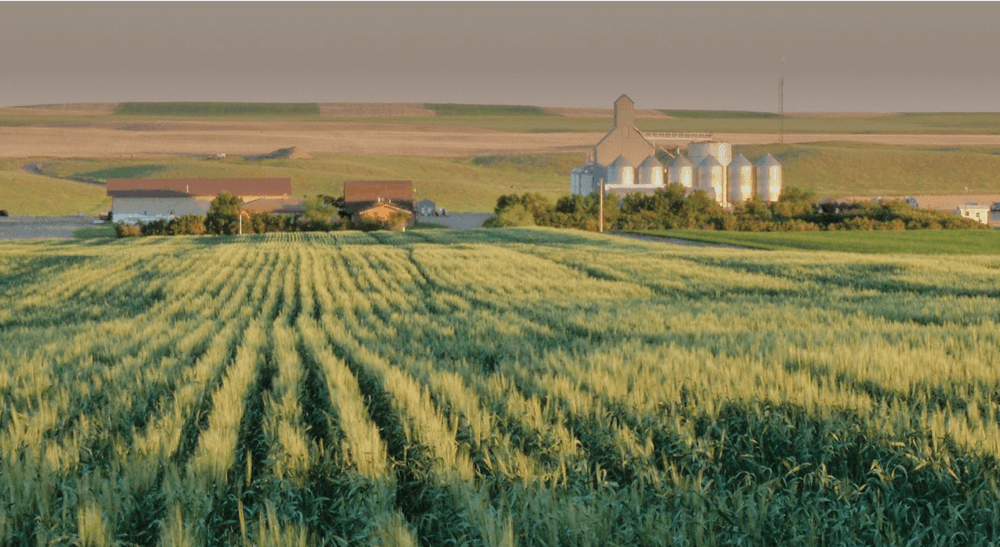
CROPLANDS
"REGENERATIVE AGRICULTURAL PRACTICES CAN TURN BACK THE CARBON CLOCK, REDUCING ATMOSPHERIC CO2."
Regenerative agriculture builds soil health, crop resilience, above and below ground biodiversity, increases water retention and sequesters carbon -all while increasing food security and resilience against drought.
“Soil as Carbon Storehouse...” Judith Schwartz, Yale Environment 360; “What Is Regenerative Agriculture?” Definition Paper, Regeneration International. 2017.
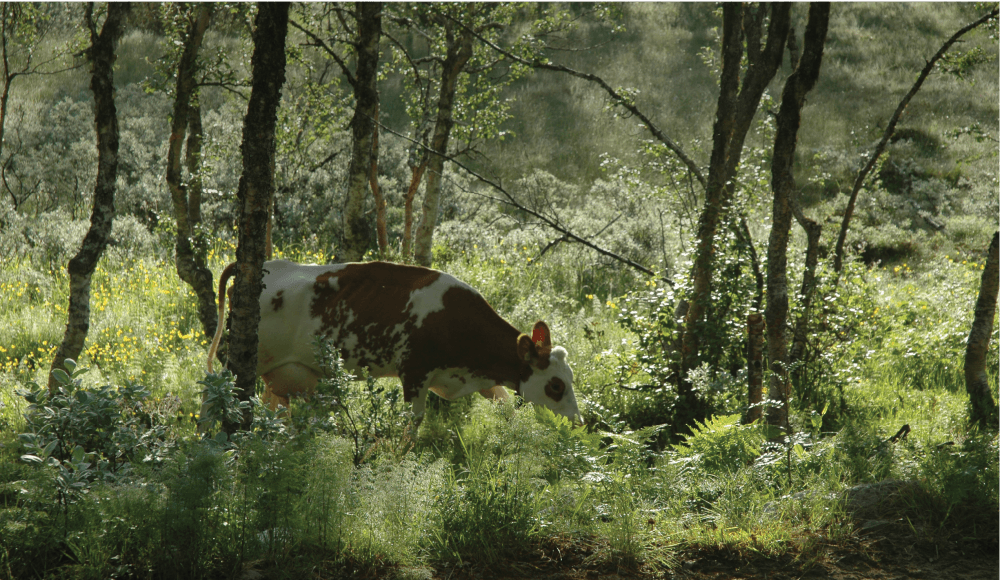
PASTURES
WE CAN TRANSFORM OUR PASTURES FROM A CARBON SOURCE INTO A CARBON SINK.
“Improved grazing can sequester from one-half to three tons of carbon per acre...and their soils can soak up eight, ten, and fourteen inches of rain per hour, whereas before the hardened soils would pond and erode with a mere inch of rain”
“Drawdown” Edited by Paul Hawken. Image: Norwegian red cow grazing. by Sondreaasan. wikimedia commons. CC4.0
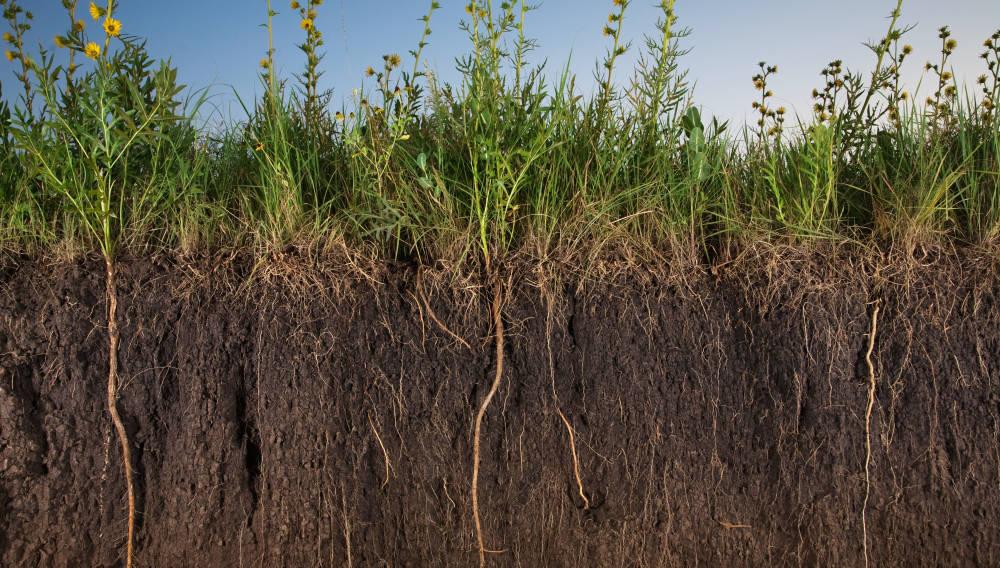
SOIL
"THE LAST GREAT HOPE OF AVOIDING CATASTROPHIC CLIMATE CHANGE MAY LIE IN THE SOIL BENEATH OUR FEET." - New York Times
“Putting Carbon back in the soil is not only mitigating climate change, but also improving human health, productivity, food security, nutrition security, water quality, air quality - everything”
- Ratan Lal. quoted in “Soil Power! The Dirty Way to a Green Planet” Eleanor Taylor, New York Times, 12/2/2017; image: Jim Richardson/ National Geographic / Getty Image
NATURE BASED SOLUTIONS
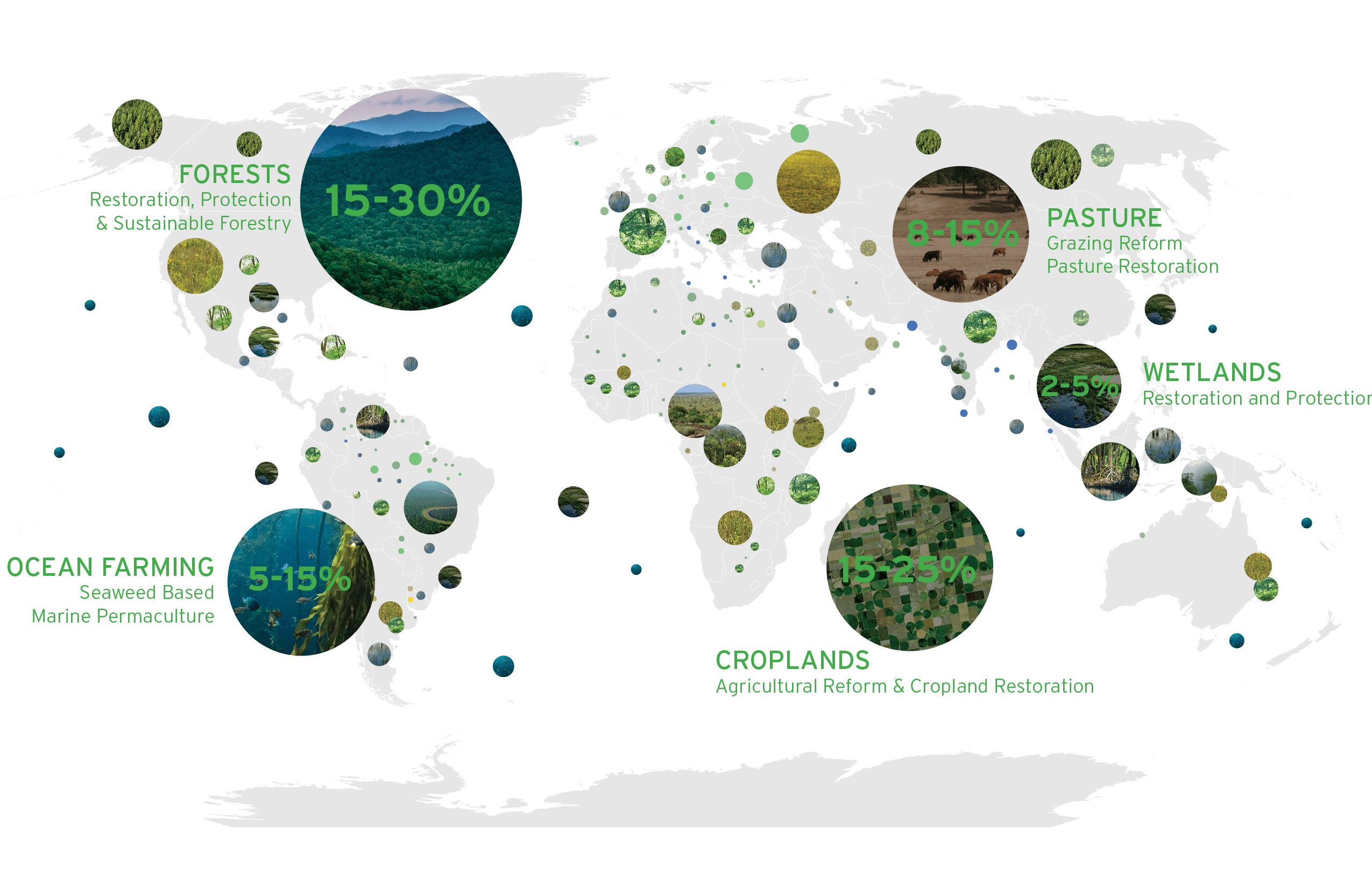
BY ADOPTING SUSTAINABLE AND REGENERATIVE PRACTICES IN AGRICULTURE, RANCHING, FISHING, AQUACULTURE, AND FORESTRY, WE CAN POTENTIALLY OFFSET 45%-90% OF ANNUAL GHG EMISSIONS.
Nature Based Solutions “are economic, scalable, and... available now and almost everywhere on the planet. They offer co-benefits, including rural regeneration, improved food and water security, coastal resilience and biodiversity protection...”
“Drawdown” edited by Paul Hawken, 2017 | Emission reductions and offset potentials represent a range of expert estimates including Project Drawdown, ‘Natural Climate Solutions’ Griscom et al. The Atlas of Forest Restoration Opportunities, ‘Importance of Food-Demand Management for Climate Mitigation” Bajzelj et al. and others.
WHAT IF WE COULD GIVE LAND BACK TO NATURE?
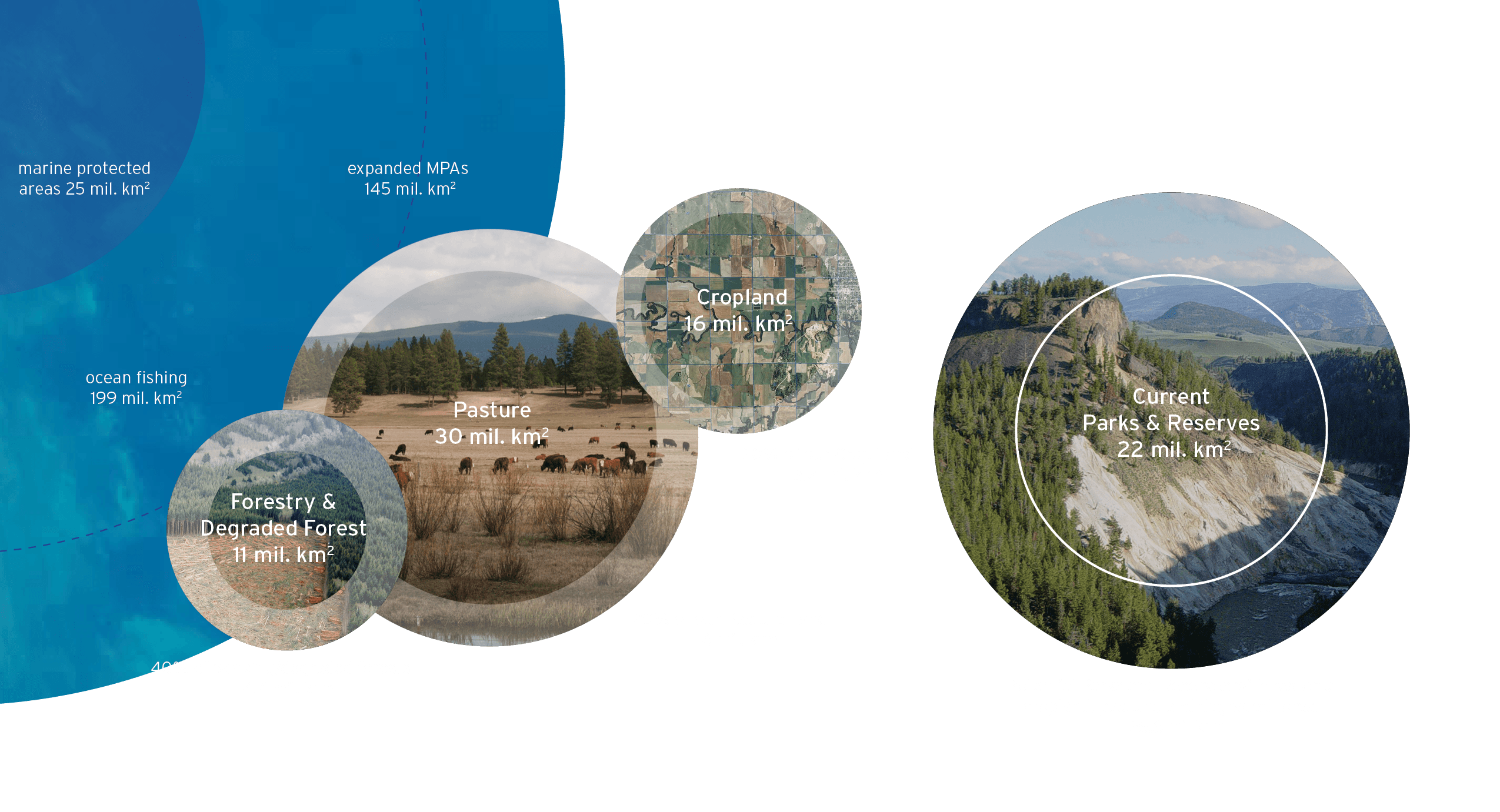
By improving our agricultural and grazing practices, and by sustainably fishing and farming the ocean, we could feed more people, reduce carbon emissions and increase our parks and reserves by 50%.
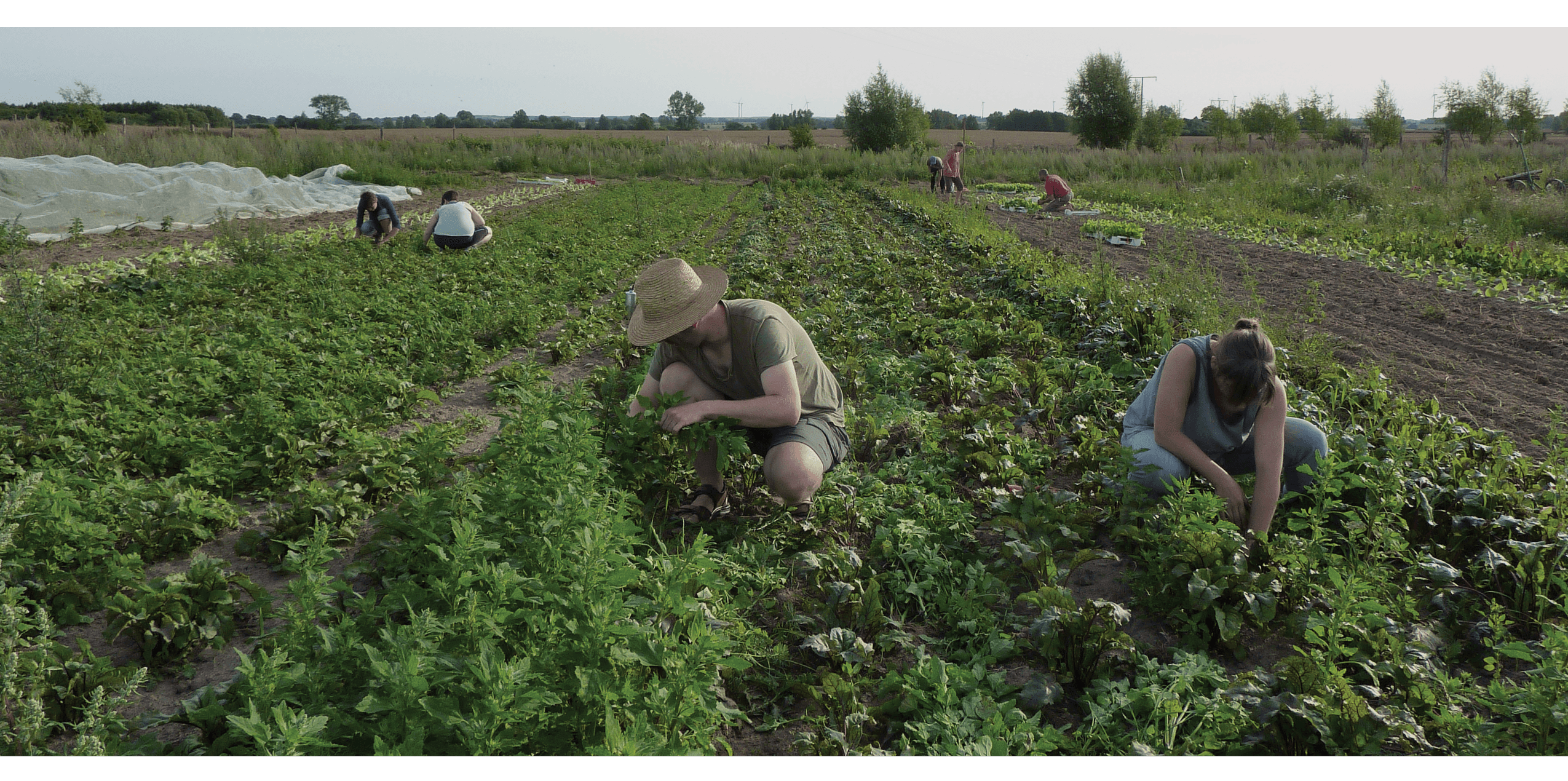
Five steps... could increase food available for human consumption by more than 100%... while reducing emissions, biodiversity losses, water use and water pollution.
Stop expanding agriculture’s footprint.
Increase low yield croplands sustainably.
Reduce tillage, fertilizer, and water use.
Reduce food waste (30% of all food is wasted)
Shift diets away from meat.
“We can dramatically increase global food availability and environmental sustainability by using more of our crops to feed people directly and less to fatten livestock... even small shifts in diet... from grain-fed beef to poultry, pork or pasture-fed beef, can pay off handsomely.”
Sources: giving land back to nature graphic - Eric Sanderson, "The Human Footprint" | Five Steps - Johnathan Foley. “Can we feed the world? And Sustain the Planet? A five-step global plan could double food production by 2050 while greatly reducing environmental damage”, Scientific American, Novemeber 2011.
Next solution



Learn about Maya Lin’s fifth and final memorial: a multi-platform science based artwork that presents an ecological history of our world - past, present, and future.

Discover ecological histories and stories of former abundance, loss, and recovery on the map of memory.

Learn how we can reduce our emissions and protect and restore species and habitats – around the world.

See how art can help us rethink the problems we face, and give us hope that each one of us can make a difference.

Help make a global memorial something personal and close to home. Share your stories of the natural world.